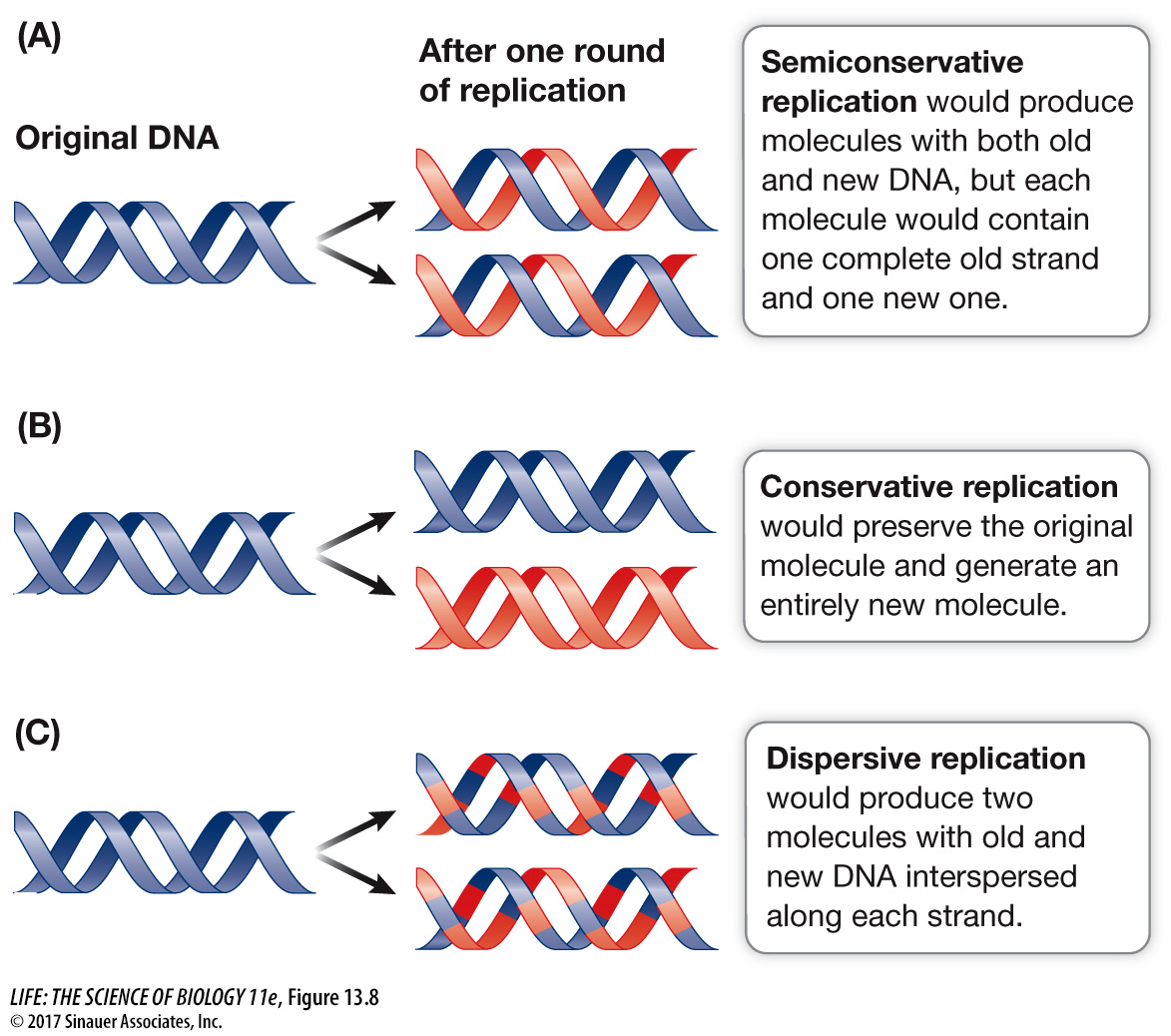key concept
13.3
DNA Is Replicated Semiconservatively
key concept
13.3
DNA Is Replicated Semiconservatively
The mechanism of DNA replication that Watson and Crick proposed was soon confirmed. First, researchers showed that DNA could be replicated in a test tube containing simple substrates and an enzyme. A subsequent study showed that each of the two strands of the double helix can serve as a template for a new strand of DNA.
focus your learning
The Meselson-
Stahl experiment provided evidence to support the semiconservative model of DNA replication. Semiconservative DNA replication requires deoxyribonucleoside triphosphates, DNA polymerase, and a DNA template.
DNA replication proceeds bidirectionally from an origin of replication (ori); E. coli has a single ori, and eukaryotic chromosomes have multiple ones.
The first replication event at the ori uses DNA helicases and single-
stranded binding proteins.
Test tube synthesis of DNA needed the following substances:
The deoxyribonucleoside triphosphates dATP, dCTP, dGTP, and dTTP. These are the monomers from which the DNA polymers are formed.
DNA molecules of a particular sequence that serve as templates to direct the sequence of nucleotides in the new molecules.
A DNA polymerase enzyme to catalyze the polymerization reaction.
Salts and a pH buffer, to create an appropriate chemical environment for the DNA polymerase.
The fact that DNA could be synthesized in a test tube confirmed that a DNA molecule contains the information needed for its own replication. The next challenge was to determine which of three possible replication patterns occurs during DNA replication:
Semiconservative replication, in which each parent strand serves as a template for a new strand, and the two new DNA molecules each have one old and one new strand (Figure 13.8A)
Conservative replication, in which the original double helix serves as a template for, but does not contribute to, a new double helix (Figure 13.8B)
Dispersive replication, in which fragments of the original DNA molecule serve as templates for assembling two new molecules, each containing old and new parts, perhaps at random (Figure 13.8C)

Watson and Crick’s original paper suggested that DNA replication was semiconservative, but the test tube demonstration described above did not provide a basis for choosing among these three models.
Animation 13.2 DNA Replication and Polymerization